
The Vue Kanban board is a task scheduling control that provides clear user interface representation to manage multiple stages of work. The Kanban board is widely used in various real-time applications such as task scheduler, project management, software or product development, manufacturing process, personal task management, and much more.
By default, Kanban has a simple layout with cards and columns. But users can create complex Kanban boards based on their application needs and integrate with any team in an organization.
Vue Kanban has a highly responsive layout and a finely optimized design for desktops, touch screens, and smart phones.
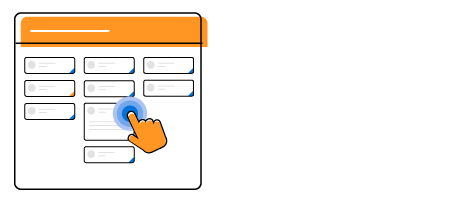
User-friendly touch gestures and an interactive UI design on Kanban help produce the best user experience.
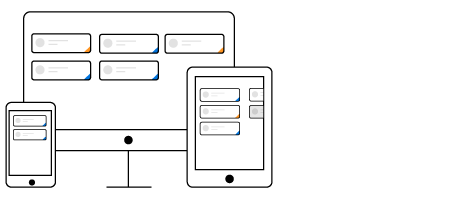
The Kanban user interface adapts automatically to mobile and desktop devices. This helps the application to scale elegantly across all form factors without any additional effort.
Data binds seamlessly with various local and remote data sources, such as: JSON, RESTful services, OData services, and WCF services.
Vue Kanban loads data on demand by default to reduce transfer and load times. Proper field mapping is mandatory when binding Kanban to the data sources with different field names.

The Kanban restrict or allow card transitions from one column to another to maintain a controlled workflow process.
Users can set limits to the card count at each stage of Kanban workflow to avoid working on multiple tasks. Kanban columns visually change its appearance when validation fails.
A card is the main element of Kanban board that provides clear representation of tasks and flows across various stages.
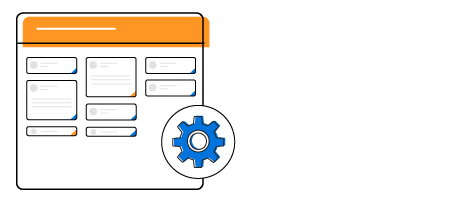
Change the look and feel of Kanban cards by customizing their default appearance and style using any HTML or CSS element.

Provides smooth drag-and-drop support to modify the status of cards.

Easily select multiple cards using mouse, keyboard, or touch interfaces. You can also make multiple selection of cards by pressing the Shift key.
The Kanban board divides its layout as columns to visualize the different stages of work, e. g. to-do, validate, in-progress, testing, and completed.

Built-in support is available for expanding and collapsing the columns by interaction and programmatically. Users can also control the collapsible behavior on page load.
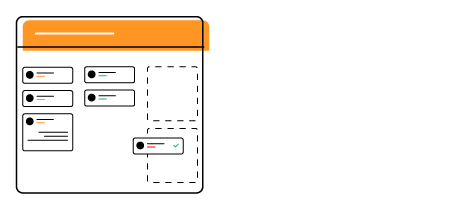
Users can map multiple keys to single columns to group similar columns. i.e., development column has implementation, review, and testing.
Vue Kanban provides full support to create, read, update, and delete operations (CRUD) on cards. In addition to built-in editing through dialog, users can create a template that suits their application needs. Editing operations are performed with the help of a data manager.
Vue Kanban allows you to add additional headers to group the logically related columns above the column header in a stacked manner.
Visually split the Kanban board horizontally to categorize the cards based on key i.e., assignee, project, or type. Users can customize the swimlane header with templates and control the visibility of empty rows and items count in a swimlane row.
The Swimlane frozen rows option makes the rows always visible at the top when scrolling the content. It is mainly used to show corresponding swimlane rows.
Display card information with a default tooltip or customized tooltip template.
Users can customize the UI elements of Kanban using templates i.e., column header, cards, swimlane header, and tooltip.
Kanban can easily be adapted to any language and culture. It also has support to render in the right-to-left (RTL) direction.

Localize all the static strings that are used in the user interface of the Vue Kanban control using the localization (l10n) library.
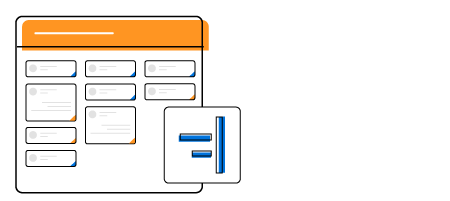
Vue Kanban allows you to render its layout, columns, and cards from right to left to improve the user experience and accessibility for RTL languages.
Five built-in SASS-based themes are available, such as Material, Bootstrap, Fabric (Office 365), Tailwind CSS, and High Contrast.

The Kanban Board component is also available in Blazor, React, Angular, and JavaScript frameworks. Check out the different Kanban Board platforms from the links below,
Developers can have full control over the UI and behavior of the Kanban board through its built-in, developer-friendly APIs. The simple and extensible APIs allow you to customize Kanban functionalities with ease.
Easily get started with the Vue Kanban Board using a few simple lines of Vue codes as demonstrated below. Also explore our Vue Kanban Board Example that shows you how to render and configure a Kanban Board in Vue.
- <template>
- <div id="app">
- <ejs-kanban id="kanban" keyField="Status" :dataSource="kanbanData"
- :cardSettings="cardSettings">
- <e-columns>
- <e-column headerText="To Do" keyField="Open"></e-column>
- <e-column headerText="In Progress" keyField="InProgress"></e-column>
- <e-column headerText="Testing" keyField="Testing"></e-column>
- <e-column headerText="Done" keyField="Close"></e-column>
- </e-columns>
- </ejs-kanban>
- </div>
- </template>
-
- <script>
- import Vue from "vue";
- import { KanbanPlugin } from '@syncfusion/ej2-vue-kanban';
- import { extend } from '@syncfusion/ej2-base';
- import { kanbanData } from './datasource.js';
- Vue.use(KanbanPlugin);
- export default {
- data: function() {
- return {
- kanbanData: extend([], kanbanData, null, true),
- cardSettings: {
- contentField: "Summary",
- headerField: "Id",
- }
- };
- },
- }
- </script>
-
- <style>
- @import '../node_modules/@syncfusion/ej2-base/styles/material.css';
- @import '../node_modules/@syncfusion/ej2-buttons/styles/material.css';
- @import '../node_modules/@syncfusion/ej2-layouts/styles/material.css';
- @import '../node_modules/@syncfusion/ej2-dropdowns/styles/material.css';
- @import '../node_modules/@syncfusion/ej2-inputs/styles/material.css';
- @import '../node_modules/@syncfusion/ej2-navigations/styles/material.css';
- @import '../node_modules/@syncfusion/ej2-popups/styles/material.css';
- @import '../node_modules/@syncfusion/ej2-vue-kanban/styles/material.css';
- </style>
We do not sell the Vue Kanban Board separately. It is only available for purchase as part of the Syncfusion team license. This contains over 1,900 components and frameworks, including the Vue Kanban Board. The price of the team license starts at $395 per month for 5 developers, and includes support and updates until the subscription expires. In addition, we might offer discounts based on currently active promotions. Please contact our product specialists today to see if you qualify for any additional discounts.
You can find our Vue Kanban Board demo here.
No, our 1,900+ components and frameworks for web, mobile, and desktop, including our Vue Kanban Board, are not sold individually. They are only available as part of a team license. However, we have competitively priced the product, so it only costs a little bit more than what some other vendors charge for their Kanban Board component alone. We have also found that, in our experience, our customers usually start off using one of our products and then expand to several products quickly, so we felt it was best to offer all 1,900+ components and frameworks for a subscription fee that starts at $395 per month for a team of 5 developers. Additionally, we might be able to offer discounts based on currently active promotions. Please contact our product specialists today to see if you qualify for any additional discounts.
No, this is a commercial product and requires a paid license. However, a free community license is also available for companies and individuals whose organizations have less than $1 million USD in annual gross revenue, 5 or fewer developers, and 10 or fewer total employees.
A good place to start would be our comprehensive getting started documentation.
 Documentation
Documentation
Greatness—it’s one thing to say you have it, but it means more when others recognize it. Syncfusion® is proud to hold the following industry awards.